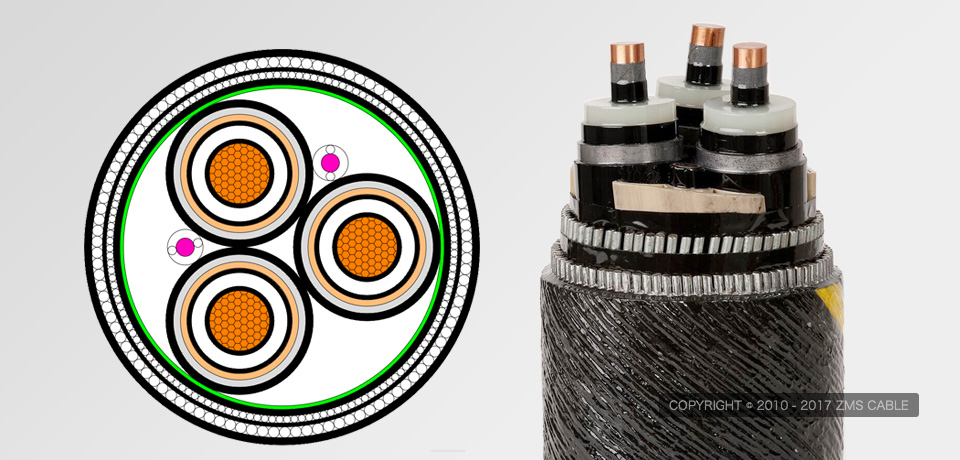
Cable faults can be summarized as grounding, short circuits, and disconnection.
The main types of cable faults are as follows:
(1) Network Failure: The cable insulation is good and there is no failure under low voltage.
But as long as the voltage value rises to a certain range, or a certain voltage continues to rise after a period of time, the insulator will be broken down instantly, causing a flashover failure.
(2) Single-Phase Core Or Multi-Phase Open Circuit: In the continuous test of the cable conductor, the insulation resistance of each conductor of the cable meets the relevant regulations, but in the inspection, when one or more phases cannot be continuous, it means one phase The core or multiphase core is damaged.
(3) Three-Core Cable Or One- And Two-Core Grounding: Use an insulating rocker to conduct a discontinuous test on one- or two-core conductors of a three-core cable, and then remotely measure the insulation resistance of the one- or two-core cables to the ground.
If the insulation resistance between the core wire and the core wire is much lower than the normal value, the insulation resistance value higher than 1000 ohms is called a high-resistance ground fault; on the contrary, a low-resistance ground fault. These two types of faults are called disconnection and ground faults.
(4) Three-Phase Core Short Circuit: Grounding resistance is the basis for judging the short-circuit fault of the three-phase core wire.
There are two types of short-circuit faults: low-resistance short-circuit faults and high-resistance short-circuit faults.
When the three-phase core wire is short-circuited, the grounding resistance below 1000 ohm is a low-resistance short-circuit fault, and vice versa, it is a high-resistance short-circuit fault.
The most direct cause of cable failure is low insulation breakdown, which is summarized as follows:
(1) External Force Damage: External force damage is the most common cause of cable failure.
Large-scale power outages will occur after cables are damaged by external forces.
For example, during the construction of underground pipelines, the cables are broken due to the excessive traction of the construction machinery; the cable insulation and shielding layers are damaged due to excessive bending of the cables; the cables are excessively cut and the cables are broken.
The knife mark was too deep when it was cut. These direct external forces can cause certain damage to the cable.
(2) Moisture-Proof: Imperfect cable production technology will cause damage to the cable protective layer, imperfect sealing of cable terminal joints, and cable protective sleeves that are pierced or corroded by objects during use.
This is the main reason for the dampness of the cable insulation. At this time, the insulation resistance decreases, and the current increases, causing power outages.
(3) Chemical Corrosion: Long-term current action will generate a lot of heat in the cable insulation.
If the cable insulation is exposed to a harsh chemical environment for a long time, its physical properties will change, and the cable insulation will age or even fail, causing power outages.
(4) Long-Term Overload Operation: The power cable has been in a high-current operation environment for a long time.
If there are impurities or aging in the line insulation layer, as well as the influence of external factors such as thunder and lightning on the overvoltage, overload operation will generate a lot of heat, which can easily cause power cable failure.
(5) The Quality Of Cables And Cable Accessories: Cables and their accessories are two important cable materials, the quality of which directly affects the safe operation of power cables.
Cables, accessories, and cable tripods are prone to quality problems during the production process.
For example, the cables are damp due to inadequate sealing during transportation and storage; the insulating tubes are rough, and uneven in thickness, and there are air bubbles in the tubes; they cannot be stripped accurately.
PR prefabricated cable; the designer did not make the cable joint as required.
In addition, improper material selection and poor waterproof performance in the design of cable products can also cause cable quality problems.
The method of judging common faults of 10kV power cables. In order to judge the faults of 10kV power cables, simple tests are required to determine the nature of the faults.